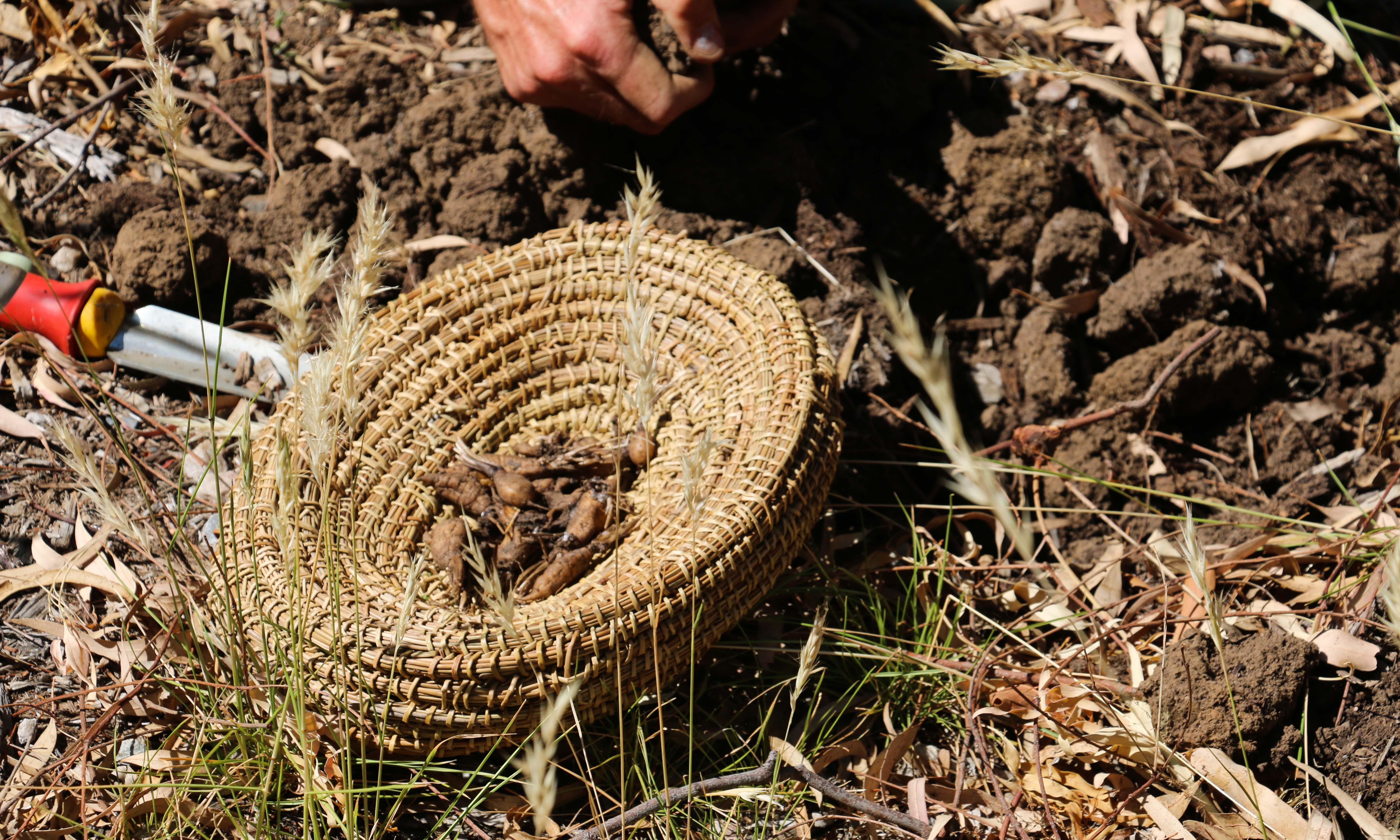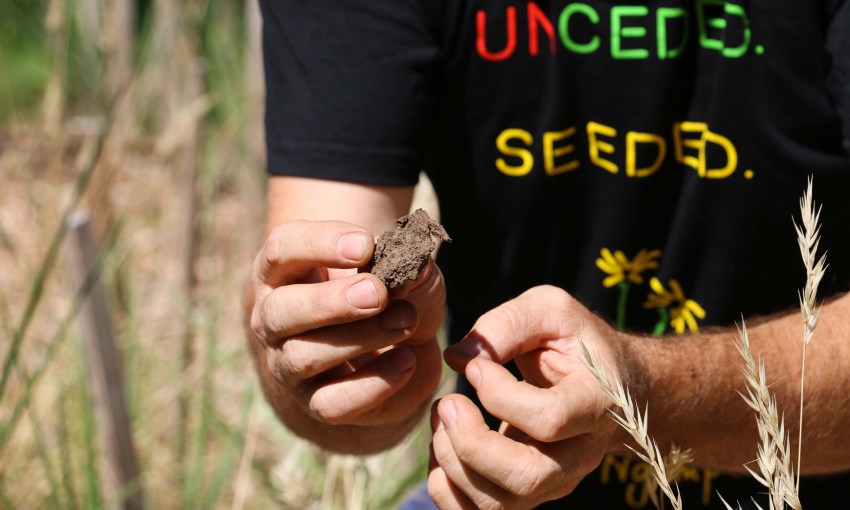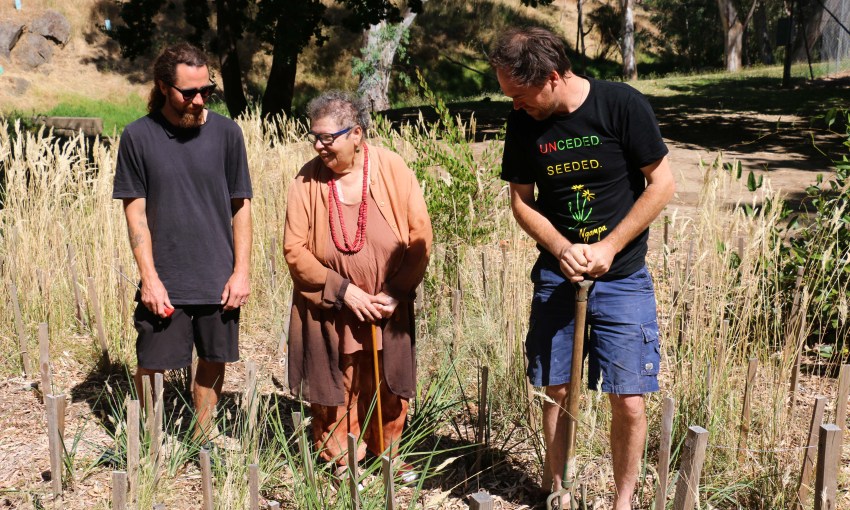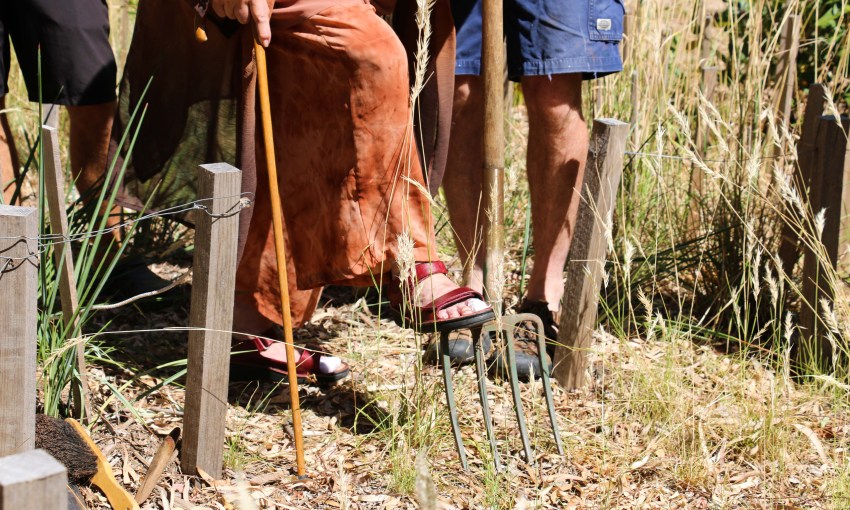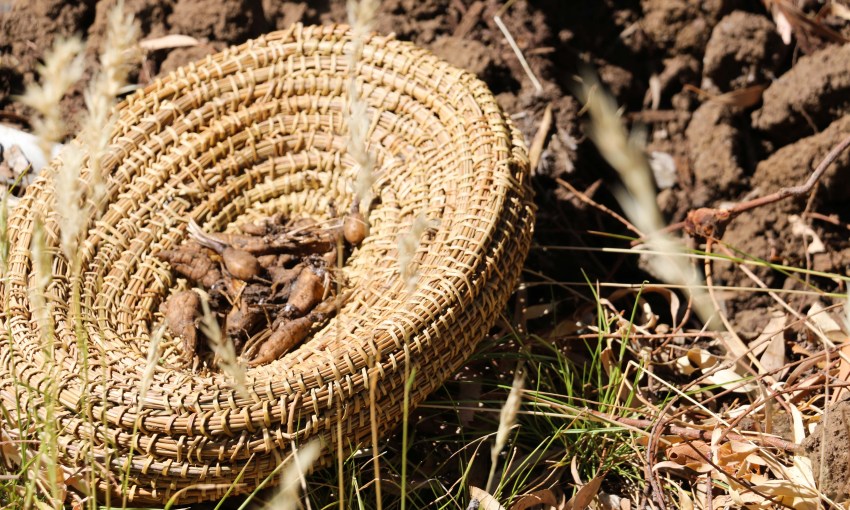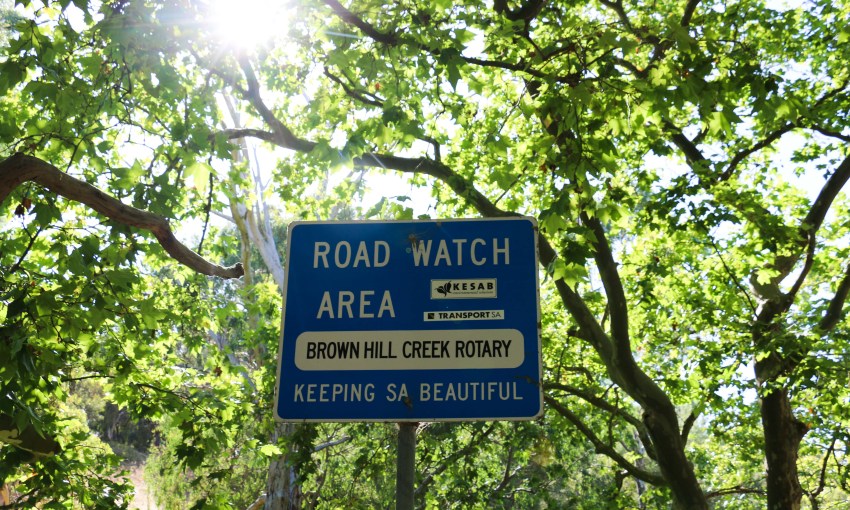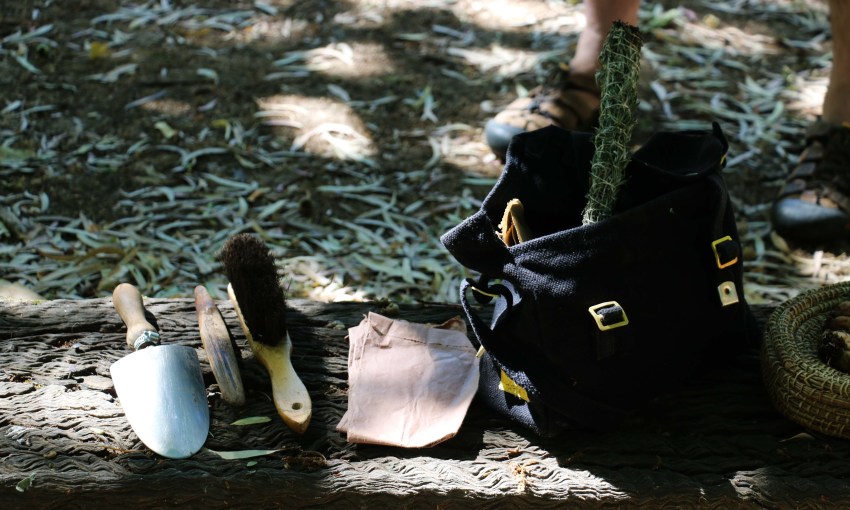On Monday, a group of environmental volunteers, Aboriginal community members and a market gardener unearthed 200 yam daisies at Brownhill Creek Recreational Park, with one Kaurna figurehead describing the project as an opportunity to “save some of nature”.
Harvesting a ‘cultural miracle’
At the mouth of the leafy 51-hectare Brownhill Creek Recreation Park, in the foothills of the Mount Lofty Ranges, a crowd gathers to witness a historic moment. For the first time since colonisation, a cluster of ngampas – the Kaurna word for yam daisies — are about to be dug up in the national park.
For a moment, there’s a worry amongst the group that rats have got to the perennial root vegetable, planted two years ago in this metre-wide patch of dirt. Mounds and mounds of dry earth are turned over and squished between fingers, gleaning no results.
But then, the daughter of Narungga and Ngarrindjeri disciplinary artist Brad Darkson plucks a misshapen lump from the earth. It’s the shell of a ngampa, the size of a 50c coin. “I told you it was women’s business,” says bush-tucker enthusiast Steven Hoepfner, as he inspects the strange specimen, his smile growing.
Over the next five minutes, handfuls of ngampas are brought out of the dark and into the sunlight.

Skinny ngampas unearthed from Kaurna Country

The tree in-question, which, we’re told, has bounced back
We’re standing near a burnt-out river red gum and a creek called Willawilla. The waterway is surrounded by billowing kangaroo grass, planted as part of the ngampa project. Ron Bellchambers is the community engagement officer for the Brownhill Creek Association, a not-for-profit community group aiming to promote the area’s natural environment and heritage.
He joins us today wearing a wide-brimmed hat and high-vis shirt, and explains the ngampa project began as an effort to save the significant river red gum sitting beside the creek, which is between 450 and 1000 years old.
“In 2011, the Kaurna shelter tree was actually dying,” Ron, a former school teacher, tells CityMag of the gum tree. “It was totally encased in weeds, woody weeds, and then in 2018 it came under development threat and a big trench was dug through its root zone.”
Brownhill Creek Association and Friends of Brownhill Creek — an environmental advocacy group — formed an alliance with the aim of returning the tree to its natural glory. In 2018 they commissioned arborist Kym Knight to do an evaluation for the almost 20-metre-tall tree, which outlined the current “unsuitable” management practices (mowing) of the environment, and that nearby weed species posed a “continuous threat” to all native vegetation in the area. There were eight recommendations in the report, which suggested a range of measures, such as controlling weeds, improving the growing environment and enhancing biodiversity.
After the report was published, the groups then turned to Kaurna Meyunna, the traditional owners of the Adelaide Plains, whose Native Title spans 29 council areas. They wanted to adopt land care practices that followed First Nations input. This is where the ngampas come in.
Under dappled light, senior Kaurna woman Aunty Lynette Crocker says sowing the ngampa seeds and harvesting the crop was part of the plan to regenerate the area. And although ngampa is traditionally women’s business, everyone was welcome to participate in today’s activities. “It’s a little bit of a cultural miracle, putting it back on the landscape and letting the land regenerate itself,” Aunty Lynette says while leaning on her walking stick.
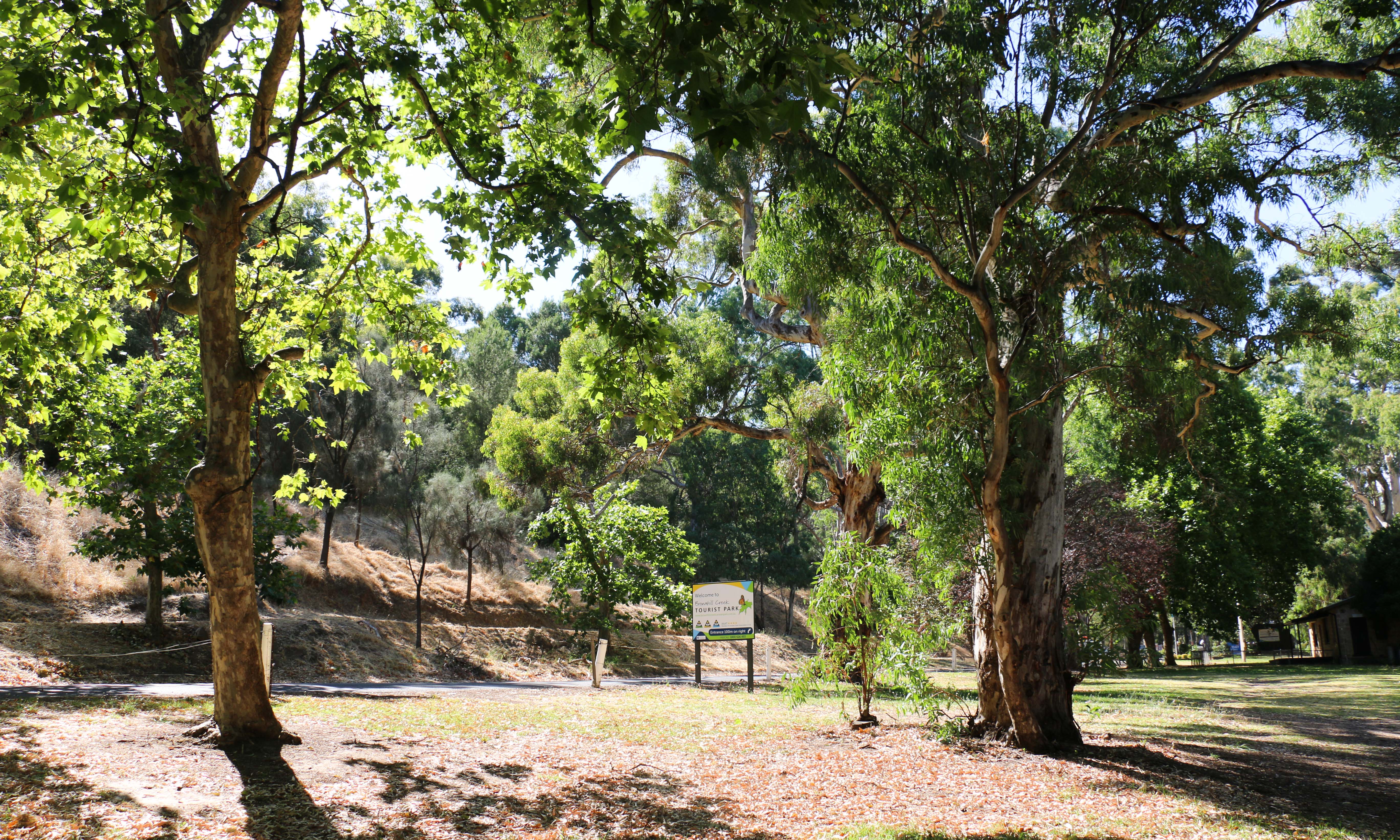
Brownhill Creek Recreation Park was once a camping, hunting and gathering ground for the Kaurna people
The high-starch ngampa was part of the staple diet for Kaurna people, and many other Aboriginal groups. After settlers introduced sheep to the Australian landscape, the vegetable was nearly wiped out by the hard-hoofed mammals. But Steven Hoepfner, operator of micro garden Wagtail Urban Farm, got his hand on some seeds.
“We were at the same function, and Aunty Lynette said, ‘Go find the yam daisy man,’” Ron recalls of how their friendship was formed. When CityMag asks Steven — who’s wearing navy cargo shorts and a hole-riddled Akubra — if he is the yam daisy man, he blushes. “[It’s] slightly awkward because it’s women’s business,” Steven says.
“I’m a market gardener and I started looking for alternatives to the current crops and I came across the yam daisies and thought, ‘Let’s develop this’, and then Aunty Lynette asked if we could plant yam daisies. I’ve got a little urban farm in Mitchell Park and I grew veggies there, but I’ve put a couple of sections aside for them.”
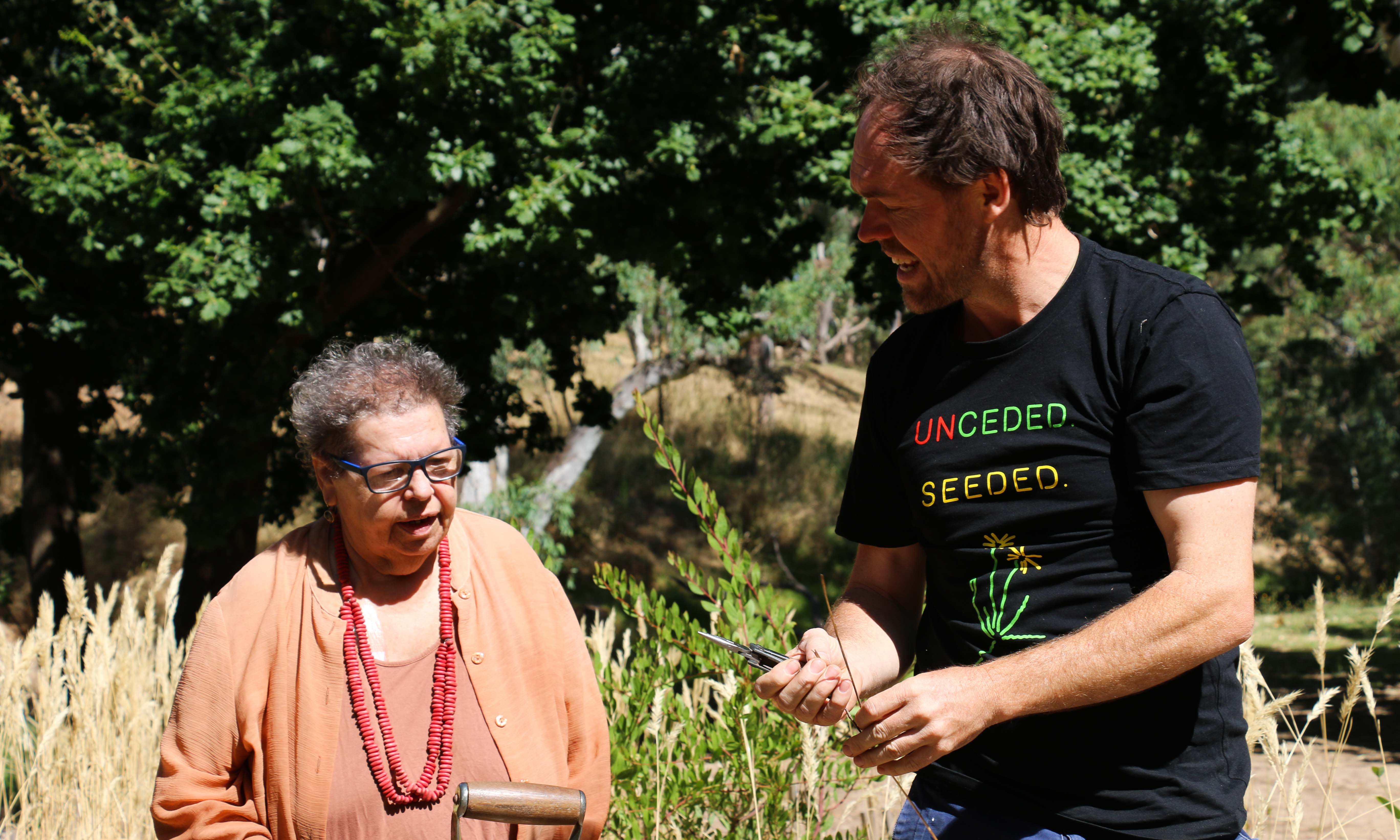
Aunty Lynette and Steven about to get their hands dirty
Steven got his first ngampas at an end-of-season sale in 2011, purchasing 50 bulbs and taking them home in a forestry tray. After making the purchase, he immediately drove home, picked one out, roasted it with a cigarette lighter and popped it in his mouth. “The taste was a cross between coconut and potato,” he says. Despite a high level of enthusiasm, all of his replanted bulbs died. However, some provided seeds.
Over the intervening years, Steven planted ngampa seeds around metropolitan Adelaide, with some specimens reaping invaluable rewards. “The place I’ve seen them do the best is I have a garden in Semaphore where I’ve grown them, and they’ve self-seeded there, which was the first time I saw them self-seed,” he says. When Steven realised his ngampas were reproducing he “almost cried”. “It was so fulfilling,” he says.
For Aunty Lynette, cultivating ngampas is part of re-confirming Aboriginal land management practices, such as fire-stick farming. “With Aboriginal people, the land is there for everybody,” she says. “It’s sowing the seed. It’s the re-education of both sides, and truth-telling. It’s about developing an understanding on how we’re going to cohabitate and save some of nature.”
Harvesting the ngampas is one part of the wider plan for the area, with an interpretive sign already erected at the base of the historic tree, and an additional 800 native plants to be planted in the area.
As the hours roll by and various volunteers fondle the ngampas, Ron stands beaming. He says what’s happened today is “really special”.
“I think that’s the great thing about the project, is we keep forming more and more connections, which is really what we’re after, to strengthen the community.”
